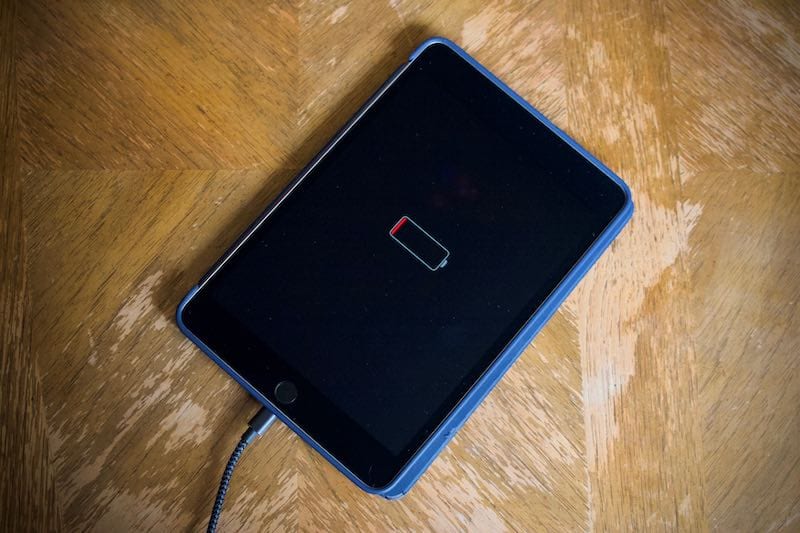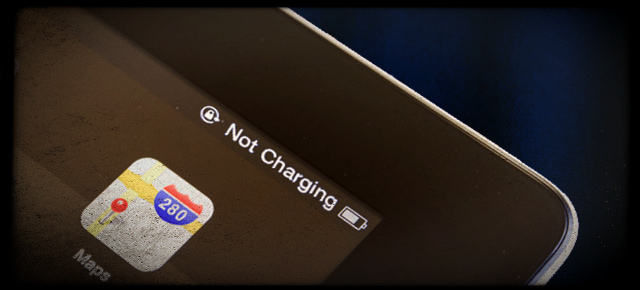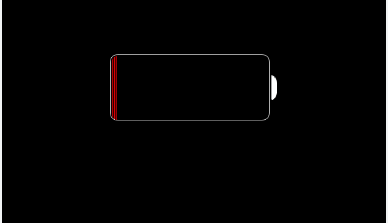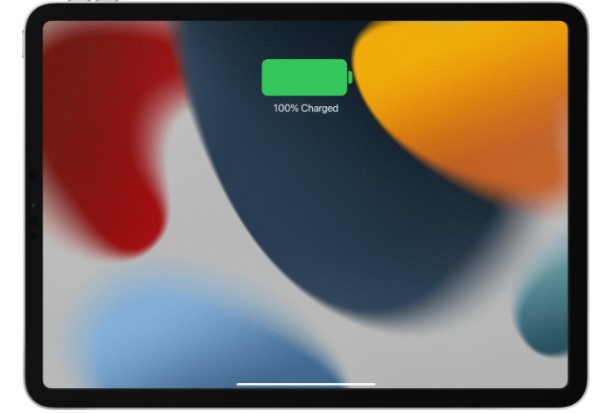One of the most well-liked and widely-sold touch-screen tablets available today is the iPad. It is utilized to watch films, play video games, write and send emails, read books, and listen to music. Its ease of use and portability are the main reasons why the iPad is so well-liked. The iPad won’t work and won’t charge in numerous situations like this one, though.
The iPad’s connector is to blame for this issue because it prevents power from the outlets or the charger from flowing into the device. Instead, it needs to be connected to a computer or power source in order to operate. I’ll explain why the iPad says it’s not charging in this article, along with a solution.
Please continue reading as I will provide you with more information that is more detailed.
Table of Contents
Why Does My iPad Say Not Charging?
Your iPad could malfunction when it comes to charging. Making sure the computer or charger has enough power should be your first priority. These are the top 5 causes of most iPads not charging:
Bad Cable
When an iPad says it’s not charging, a bad cable is one of the most frequent causes. Fraying or exposed wires and pins that become bent out of shape over time is the most typical issue. You’d have to change the cable if this were the situation.
Bad Charger
The actual charger is the second most typical reason for an iPad not to charge. If you use a third-party charger, it’s possible that it has become faulty and is no longer able to charge your iPad. A new charger is required if this is the situation. If not, it might be your power source.
Bad Power Source
A bad power source is another cause of an iPad not charging. It might be something straightforward, like the outlet, or it might be that the outlet is improperly grounded.
Three screws need to be turned if you’re using a power strip to get an outlet that has been properly grounded. Even though your iPad may still function flawlessly, it might not charge if the screws have not been installed properly. To verify this in this situation, speak with an electrician.
Overheating iPad
If you own an older iPad, it’s possible that the circuits have malfunctioned due to the iPad getting too hot.
It might be caused by a number of factors, such as leaving your iPad in the sun or a warm place for an extended period of time. If so, wait for your device to cool off before attempting to charge it again.
The iPad Connector Or Port Is Broken Or Bent
The iPad connector has occasionally fractured as a result of use or mishaps. The connector is the area of the iPad where the charger is inserted to charge the device.
The prongs on your iPad may bend out of shape with use and time. If your iPad has been dropped, it’s also possible that it won’t allow a proper connection to form for charging.
How To Fix When Does My iPad Say Not Charging?
Check The Charger
Check the charger’s functionality if your iPad won’t charge at all, fails to chime, or fails to come to life after being powered off. Check to see if it charges another device by using it. If the charger charges other devices but not your iPad, you know the iPad needs some sort of support.
Check The Cable
Verify that the cable you are using is MFi (made for iOS) certified if you have an iPad with a Lightning connector. iOS devices that use the Cables lacking the proper MFi authentication hardware won’t function with Apple Lightning connectors.
Except for USB-C to Lightning adapters, no USB cables have any sort of MFi-type block as of the time of writing. For USB-C cables and chargers, similar advancements are being made, but they haven’t yet been made. To make sure the cable isn’t broken, test it with a different device if you have a USB-C iPad.
Check Your Port!
For iPads with Lightning ports, this isn’t a typical problem, but in our experience, dirt tends to collect in USB-C ports in a way that makes it difficult to make a good connection. Lint, dust, and other undesirable materials that are pushed into the port every time you plug it in can be gently removed using a non-conductive blunt object, such as a plastic or wooden toothpick. You can quickly determine whether there is a lot of junk inside by using a flashlight.
An intermittent connection, where the connection repeatedly breaks off, is a common indicator that this is the issue. You will repeatedly hear the charging chime in this case. Simply be extremely cautious not to harm anything when cleaning out the port.
Not A Single Port In A Storm
If you’re trying to charge your iPad using a device other than the authorized Apple charger, try using the authorized charger first before giving up if it still won’t charge. This is particularly true if you want to restart an iPad whose battery has completely run out.
Some ports are unable to negotiate power levels above those of standard USB ports because they lack sufficient power or the necessary fast-charging hardware. So before you freak out, try different power sources.
Different ports with varying ampere levels are available on some power banks and 12V USB car chargers. High-power ports may be identified by a double lightning-bolt symbol or some other mark that indicates that they can supply more power than a standard USB port can. To give your iPad the power it needs for a charge, be sure to connect it to one of these fast-charging ports.

Socket Sorrows
The issue can sometimes be fairly clear. You’d never consider it because it’s so obvious! In case any other extension or socket system is at fault, try plugging the charger for your iPad directly into the wall outlet first.
Check to see that the connection is tight and secure and that any other devices plugged into the outlet function properly. Examine the charger to check for any damage to the prongs that might affect the connection. When handling household electricity, use caution at all times!
Do A Reboot
Rebooting an iPad is almost never necessary, but if your tablet won’t acknowledge that you’ve plugged in power, at least try turning it off and on again. Even when an iPad is plugged into a functioning charger when its software has completely crashed, the screen frequently stays black and unresponsive. Performing a hard reboot usually fixed this.
Depending on whether your iPad has a physical home button or not, there are different ways to accomplish this.
If you have an iPad that doesn’t have a home button, here’s how to reboot it:
- Hold the top button of the device in.
- While you do that, hold one of the volume buttons until the power off slider appears.
- Slide the slider to switch off your iPad.
- Take a moment to pause for a few seconds and reflect on life.
- Now, hold the top button again until the Apple logo appears.
- Try charging your iPad once more after it has booted.
If you have an iPad with a home button, here’s how to reboot it:
- Hold the top button down until you see the power off slider.
- Slide it to turn off the iPad.
- So, how have you been lately? I’ll give you a second.
- Now hold the top button again until you see the Apple logo appear.
- Once booted, plug the charger in to see if it’s made a difference
It is most likely not a software bug if your iPad is still not charging after restarting.
Have It Assessed By Apple
You’ll probably need to go to an Apple store if after following all the instructions on this page your iPad still won’t charge or turn on. If your iPad is still covered by warranty, you can probably have it easily replaced or repaired. If not, you might need to purchase a new iPad if the battery or charging circuitry replacement is either impossible or prohibitively expensive.
However, unless your iPad is extremely old or there was a manufacturing defect, it probably won’t be a problem forever! See more about Apple iPad 10.2″ 8th Gen
Effects: Not Fixing The Problem
When you take the time to attempt to solve the issue yourself, it can be extremely frustrating. Like any other technical issue, your iPad will be affected if you don’t resolve the issue. Here are some effects that it can have:
On your iPad, you might lose files, information, and programs. This might not seem like a big deal, but if you rely on your iPad for work or school materials and can’t access them, it could become a problem.
You may need to purchase a new iPad. If this is not the case, you might need to purchase a new iPad, which can be costly.
This issue might harm your iPad. The circuits in your iPad are not working properly if it cannot charge. It might result in the malfunction, total breakage, or total burnout of your iPad.
The battery in the iPad will eventually degrade. It is what occurs when your iPad becomes overheated, which prevents the power source from functioning as effectively as it once did. As a result, after becoming overheated, your iPad stops functioning.
How To Fix Your Iphone That Won’t Charge Properly?
Try A Different Power Source
It’s possible that the power source is the issue rather than your iPhone. To see if it makes a difference, try plugging it into a different power outlet or your computer. Try connecting it to another USB port if you were previously charging it from your computer.
Try A Different Charging Cable
Look over your charging cable. You may want to borrow a new cable to try. You need to get a new charging cable if your iPad is currently charging.
Charging Port
It’s possible that your iPad won’t charge if the charging port is damaged or blocked in some other way. Attempt to clean the port. Use a toothbrush, if possible. Try forcing air (very forcefully) into the charging port on your device. It can clear up debris. Your charging cable should be plugged in and out several times. Additionally, this might clean the charging port of any debris.
Restart Your Device
Simply press and hold the side button until the red slider appears to restart your iPad. You can alternatively go to Settings > General > Shut Down (if your device is running iOS 11 and later)
Update Your Ios
Your iPhone only needs an update. This is simple and wirelessly possible. Go to Settings > General > Software Update and click it.
Force Restart Your iPad
To do this, press and hold the home button and sleep/wake buttons together for a few seconds until you see the Apple logo
Conclusion
There are numerous things you can do to resolve the issue, which can be very frustrating. You should do everything you can as soon as possible because this issue is most likely connected to one of your iPad’s issues. You should get this fixed for you by contacting a repair facility or an Apple Authorized Service Provider.
Many thanks for reading.


